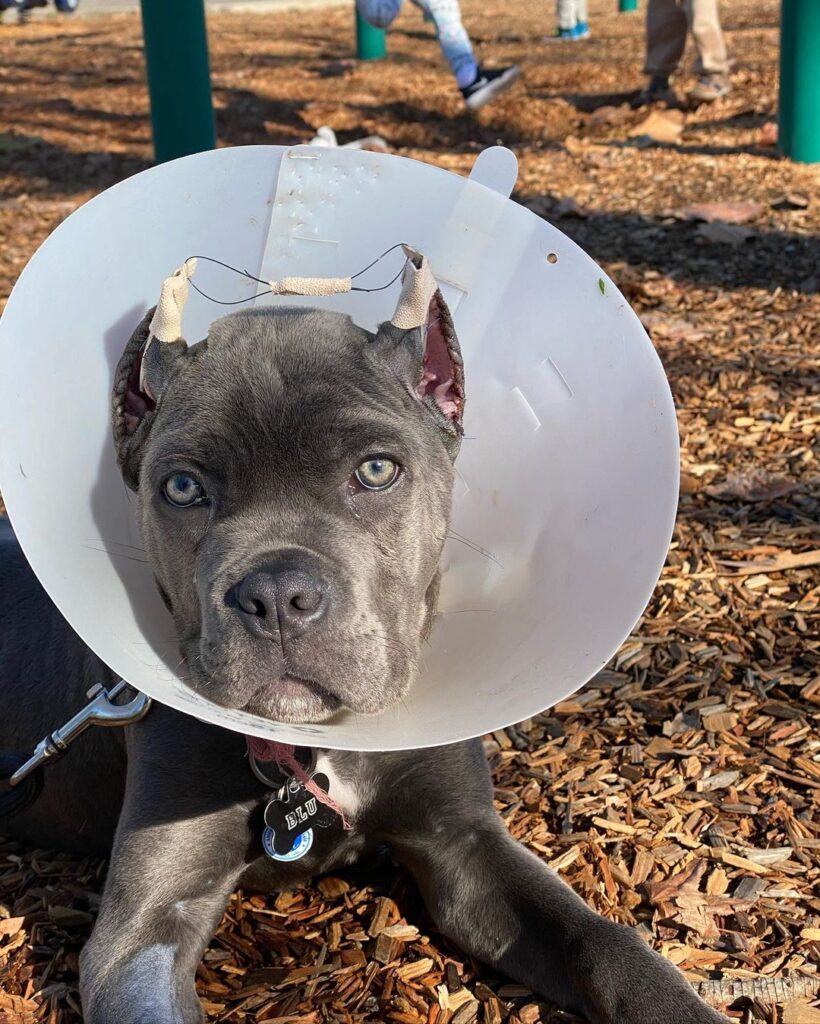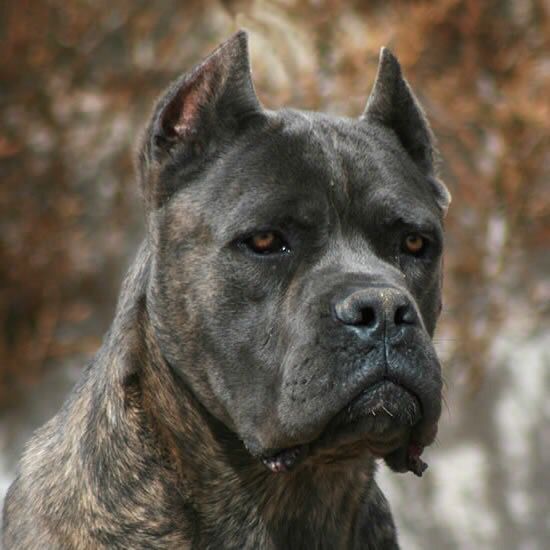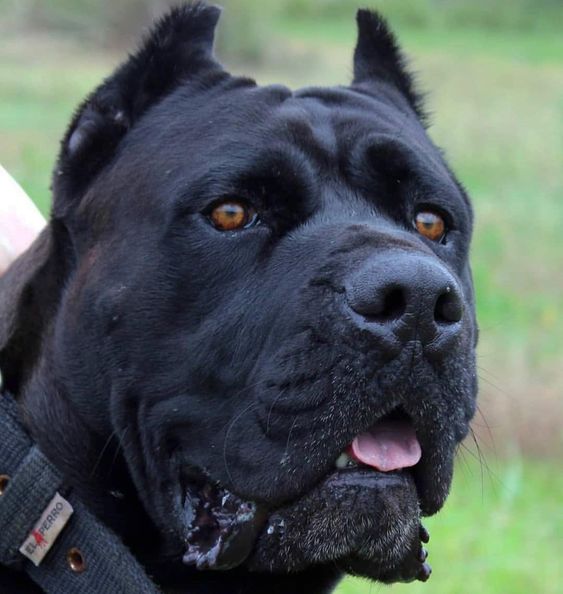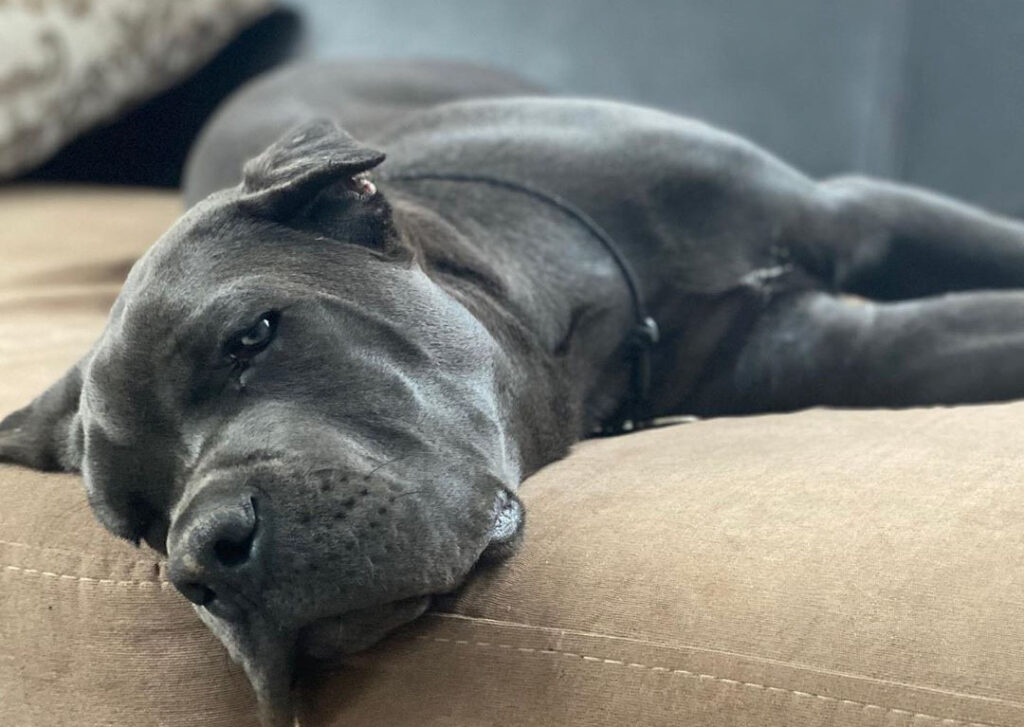
Cane Corso ear cropping is a practice that has been a topic of discussion among dog owners, breeders, and veterinarians for years. This cosmetic procedure involves surgically altering the ears of the Cane Corso breed for aesthetic purposes. In this article, we will explore the various aspects of Cane Corso ear cropping, including its pros and cons, different styles, aftercare, costs, and more.
Why is Cane Corso Ear Cropping Done?
- Aesthetic Tradition: Ear cropping has historical roots in certain working and guarding dog breeds, including the Cane Corso, where it was believed to enhance their appearance and make them look more imposing.
Pros of Cane Corso Ear Cropping
- Appearance: Many enthusiasts argue that cropped ears give Cane Corsos a distinctive and regal look.
- Breed Standard: In some dog shows and competitions, cropped ears are considered more in line with the breed standard.
- Protection: Supporters claim that cropped ears could potentially reduce the risk of ear infections, as the ears are less prone to trapping moisture.
Cons of Cane Corso Ear Cropping
- Pain and Stress: The procedure is painful and stressful for the dog, as it involves surgery and post-operative care.
- Health Risks: Surgery always carries risks, including infections, adverse reactions to anesthesia, and prolonged healing times.
- Communication: Dogs use their ears for communication, and cropping could affect their ability to express themselves clearly.
Cane Corso Ear Crop Styles
Different ear crop styles offer Cane Corso enthusiasts the opportunity to tailor their dog’s appearance. The choice of style is influenced by both personal preference and breed standards, reflecting the diverse spectrum of looks that can be achieved.
Short Crop
The short crop style involves cropping the ears very short, causing them to stand erect and close to the head. This technique gives the Cane Corso a distinct and striking appearance, emphasizing their alert and watchful expression. The ears’ minimal length contributes to a sleek and bold aesthetic, drawing attention to the dog’s strong features.
Long Crop
Opting for a long crop style entails cropping the ears slightly shorter than their natural length while maintaining an upright position. This choice creates a balance between the cropped and natural look, offering an elegant compromise. The ears retain some of their original length, achieving a poised and regal appearance that complements the Cane Corso’s majestic stature.
Cane Corso Ear Cropping Aftercare
Proper aftercare is paramount to ensure the well-being and successful healing of a Cane Corso’s ears following the ear cropping procedure. Comprehensive aftercare measures contribute to minimizing discomfort and reducing the risk of complications.
Cleaning
To maintain ear hygiene and prevent infections, it’s essential to use a veterinarian-recommended ear cleaning solution. Gently clean the ears, taking care not to cause discomfort to the dog. Cleaning should be approached with patience and attentiveness to prevent any unnecessary distress.
Medication
Following the advice of your veterinarian, administer pain management medications to alleviate any discomfort your Cane Corso might experience after the procedure. In case of antibiotics being prescribed, ensure they are given as directed to prevent the onset of infections.
Cane Corso Long Crop Ears
The long crop style is a favored choice among Cane Corso owners who desire a harmonious blend of cropped and natural-looking ears. The elegance of this style lies in its ability to strike a balance between a tailored appearance and preserving the dog’s inherent charm.
Healing Process
The healing process post-ear cropping varies in duration, often spanning several weeks to months. Regular veterinary check-ups during this time are crucial to monitor the progress and ensure that healing is proceeding as expected. Patience and attentive care are essential factors in facilitating a successful recovery.
Cane Corso Ear Crop Cost
The financial aspect of ear cropping is an important consideration for potential Cane Corso owners. The cost of cropping a Cane Corso’s ears typically ranges from $200 to $600. The cost associated with this procedure can vary based on multiple factors, influencing the overall investment.
Factors Affecting Cost
The choice of veterinary clinic significantly impacts the cost, as different clinics charge varying fees for the procedure. Additionally, the geographical location can play a role, with costs often higher in regions characterized by a higher cost of living.
| Veterinary Clinics for Cane Corso Ear Cropping in the USA | Location |
|---|---|
| Paws and Tails Animal Hospital | New York City, NY |
| Canine Care Clinic | Los Angeles, CA |
| Elite Pet Clinic | Chicago, IL |
| Coastal Veterinary Surgery | Miami, FL |
| CityVet Specialty Center | Dallas, TX |
| Rocky Mountain Animal Hospital | Denver, CO |
| Golden State Veterinary Care | San Francisco, CA |
| Pawsitive Steps Veterinary Rehabilitation and Sports Medicine | Seattle, WA |
| Heartland Animal Hospital | Kansas City, MO |
| Atlantic Veterinary Hospital | Boston, MA |
Cane Corso Ears Not Standing
In some cases, despite undergoing the ear cropping procedure, a Cane Corso’s ears may not stand upright as intended. Understanding the potential causes and taking appropriate measures is essential.
Causes
Genetics play a role in determining whether a dog’s ear cartilage is conducive to standing upright. However, improper aftercare can also contribute to unfavorable ear posture. Attentive and diligent care following the procedure is crucial to optimize the chances of achieving the desired ear stance.
Cane Corso Ear Cropping Techniques
Cane Corso ear cropping involves delicate surgical procedures that require skilled hands. Several techniques are employed by veterinarians to achieve different ear shapes and styles, each with its own visual impact.
Battle Crop
The battle crop technique results in shorter ears that stand erect, showcasing a determined and commanding appearance. This technique’s precision is evident in the clean lines and strong angles that emphasize the Cane Corso’s vigilant expression.
Show Crop
The show crop is often chosen by owners who want to adhere closely to breed standards in dog shows. This technique strikes a balance between length and aesthetics, achieving a classic and refined look that complements the dog’s overall conformation.
Managing Post-Crop Swelling
After the ear cropping procedure, swelling can occur around the surgical site. Proper management of swelling is crucial to ensure the dog’s comfort and prevent complications.
Cold Compress
Applying a cold compress to the swollen area can help reduce inflammation. However, it’s essential to use a cloth or towel to avoid direct contact with the skin, preventing any discomfort or frostbite.
Elevation
Encouraging the dog to rest with their head elevated can aid in reducing swelling. Placing a soft cushion or pillow under the head can provide comfort while facilitating the drainage of excess fluids.
The Emotional Impact on Owners
Cane Corso ear cropping not only affects the dog’s appearance but also has an emotional impact on their owners.
Aesthetic Satisfaction
For some owners, seeing their Cane Corso with cropped ears brings a sense of satisfaction and pride. The transformed appearance can strengthen the bond between owner and dog.
Ethical Considerations
Other owners may grapple with the ethical considerations surrounding ear cropping. Reflecting on the procedure’s necessity and potential discomfort, they may experience conflicting emotions.
Alternatives to Ear Cropping

For owners who prefer not to pursue ear cropping, there are alternative approaches to enhance the Cane Corso’s appearance and maintain ear health.
Training and Exercises
Some owners use techniques such as taping, splinting, and massages to encourage the natural ears to stand upright. These methods involve consistent efforts and patience but can lead to satisfactory results.
Embracing Natural Ears
Opting to keep the ears in their natural state is a decision that aligns with the Cane Corso’s original appearance. Natural ears retain their mobility and communication function, ensuring the dog’s well-being.
FAQs
1. Is ear cropping necessary for Cane Corsos?
No, ear cropping is not necessary for their health. It’s a cosmetic procedure.
2. Are there any risks associated with ear cropping?
Yes, risks include infection, anesthesia complications, and ear posture issues.
3. Will ear cropping make my Cane Corso more aggressive?
No, ear cropping doesn’t influence a dog’s temperament.
4. What’s the best age for ear cropping?
Between 8 to 12 weeks, while cartilage is still soft.
5. How long does it take for the ears to heal after cropping?
Healing can take several weeks to months.
6. Can I crop my Cane Corso’s ears at home?
No, ear cropping should only be done by a professional veterinarian.
7. Are there alternatives to ear cropping?
Yes, leaving the ears natural is an alternative.
8. How can I prevent ear infections after cropping?
Regular cleaning and following your vet’s instructions can help.
9. Can I show my Cane Corso with natural ears?
Yes, some dog shows accept natural ears.
10. What should I do if my Cane Corso’s ears aren’t standing?
Consult your veterinarian for advice on how to address this issue.
Conclusion
Cane Corso ear cropping is a multifaceted practice that involves various styles, techniques, aftercare considerations, and emotional dimensions. As owners navigate the decision to crop or not to crop, it’s essential to prioritize the dog’s comfort, health, and overall happiness. Ultimately, the chosen approach should align with the owner’s values and the well-being of their beloved Cane Corso.
With over 4 years of devoted companionship with my beloved Labrador Retriever, Robin, I have cultivated a deep understanding and expertise in all things canine. From training and behavior to health and well-being.


